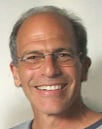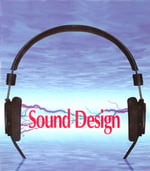 By David Sonnenschein, author Sound Design: The Expressive Power of Music, Voice and Sound Effects in Cinema. Tune into David's new Webinar Series, beginning Tuesday, February 14th - visit Sound Design for Pros for registration details!
By David Sonnenschein, author Sound Design: The Expressive Power of Music, Voice and Sound Effects in Cinema. Tune into David's new Webinar Series, beginning Tuesday, February 14th - visit Sound Design for Pros for registration details!
Key 4: Sound can help express the emotional subtext
Adjectives and adverbs give flavor to the scene descriptions, hinting to the director, actors, production designer, D.P. (director of photography) and sound designer what feeling should prevail. One can imagine a thousand kinds of “LIVING ROOM - DAY” if no emotional detail is given to the scene description and only blocking of the actors movement is indicated (which is pretty bad screenwriting technique, since this aspect should be left mostly for the director and actors to determine during rehearsals). But if a word or two of colorful portrayal is interjected, it thrusts our eyes and ears into a specific reality: abandoned, rainbow-colored, marble-columned, blood-stained, cold neon, etc.
There may be a word that seems so out of context with the rest of the description, that this could serve as a sound clue. Mark it for special attention. For example, the location could be very dark alley, with sinister tension built into the movement and dialogue. If suddenly there appears a “luminous ethereal ball”, the contrast should be made that much greater by characterizing the environment’s negative, antagonistic feeling with a sonic ambiance that will allow the arrival of the good-guy ball in the most opposite of sounds to those of the threatening alley. You can most effectively use pitch, timbre and attack in counterpoint.
Description of a scene can give you a sense of energy and direction of emotion. During a horserace, bettors have gambled not only their money but their hopes, and these can be exposed through the action and reaction in the sound track. It can also give hints to the characters’ personalities and what we can expect to accentuate in the audio during their dramatic journey throughout the film.
The chanting crowd rises to its feet as the horses head into the home stretch.
Hooves pound. Harold’s horse Supper Time nudges ahead of Peter’s horse Zip Drive.
Harold bounces like a superball, HOOTING like a hyena.
Peter GROWLS like a bear, punching the air in swift hooks.
Supposing these two fellows will be competing not only at the racetrack, but throughout the story, their forms of communication and temperament will have nuances in acting style, costume, camera angle and sound. The sound treatment will start with the use of voice (actor’s interpretation), how it is recorded (type and placement of microphone, location or studio recording) and post-production sweetening (filters, multi-tracking). Then the conditions of the ambient sounds and music will be added to reflect, support and/or contrast with each character, following the principles of psychoacoustics outlined in the earlier chapters. It all begins with the emotion that jumps off the page.
In the above case, what the two characters are feeling at that moment is considered a primary emotion, in contrast to a scene description that generates a reaction from the audience (or reader) which is denoted as a secondary emotion. An example of this can be clearly seen in a scene in which the character is trembling with anxiety, but the audience is rolling in laughter:
Hanging over the bubbling industrial cooking pots, Horace tries for the
third time to lift the slippery hard-boiled egg between his two big toes.
As he holds on for dear life to the drooping coat hanger, he manages to
pinch the egg with his extra long toenails. Slowly, slowly, he raises the
egged toes to his mouth... But slowly, slowly the egg begins to crack and
disintegrate...
In a scene that has a contrast between primary and secondary emotions, we have a choice to employ the sound purely with one emotion, or use spatial or temporal counterpoint to heighten the tension. In the following examples, I am taking liberty to use my own definitions for the various types of comedy and the rules they may follow for the sake of showing the kinds of choices that can be made in sound design.
A satire would most likely carry us into Harold’s world as the chosen point of view, focusing on the primary emotion by exaggerating the seriousness of his plight. This could be done by exploiting the cliché sounds of an action thriller, i.e. threatening low frequencies in the boiling vats below, nerve-racking dissonant metal bending of the coat hanger, Harold’s audible irregular breathing, the ominous cracking of the egg reverberating in the tiled kitchen.
In a slapstick comedy, the tone would also be exaggerated and even less subtle, with a silliness in recognition that we are the delighted observers participating in the secondary emotion, prodding us directly to the point with a more cartoonish style of sounds. The bubbles would sound with more melodic poppings, sliding the tones in a circus organ-like clown dance. The bending hanger would be a springy doowing-doowing. Harold’s breath would probably not be heard at all, so as to help focus us on our own laughing breath even more. The cracking of the egg would have a stuttering, but intelligent rhythm, a kind of tease to draw out the tension to the max.
 In a comedy that alternates between the primary and secondary emotions, we have the opportunity for a sophistication of shifting point of view and pulling the audience off guard more than they expect from either a pure satire or a slapstick comedy. By mixing the conventions, a new rhythm can be established, a kind of “beat frequency” phenomenon between the two points of view, primary and secondary, that tickles the audience’s fancy and they feel that their own heads are being tossed around on an emotional rollercoaster. Intersecting planes of reality conspire to heighten the humor, and in this case the sounds can be selected from both points of view to make this counterpoint. For example, the threatening volcanic-like bubbles from below will contrast greatly to the cartoonish springy hanger from above. Harold’s struggling breath could be heard in hyper closeness, then completely disappear when the egg cracking is cued to enter in full attention-getting intensity.
In a comedy that alternates between the primary and secondary emotions, we have the opportunity for a sophistication of shifting point of view and pulling the audience off guard more than they expect from either a pure satire or a slapstick comedy. By mixing the conventions, a new rhythm can be established, a kind of “beat frequency” phenomenon between the two points of view, primary and secondary, that tickles the audience’s fancy and they feel that their own heads are being tossed around on an emotional rollercoaster. Intersecting planes of reality conspire to heighten the humor, and in this case the sounds can be selected from both points of view to make this counterpoint. For example, the threatening volcanic-like bubbles from below will contrast greatly to the cartoonish springy hanger from above. Harold’s struggling breath could be heard in hyper closeness, then completely disappear when the egg cracking is cued to enter in full attention-getting intensity.
Stay tuned for Key 5 next month, and visit www.SoundDesignForPros.com to sign up for info on sound design webinars with David Sonnenschein.











